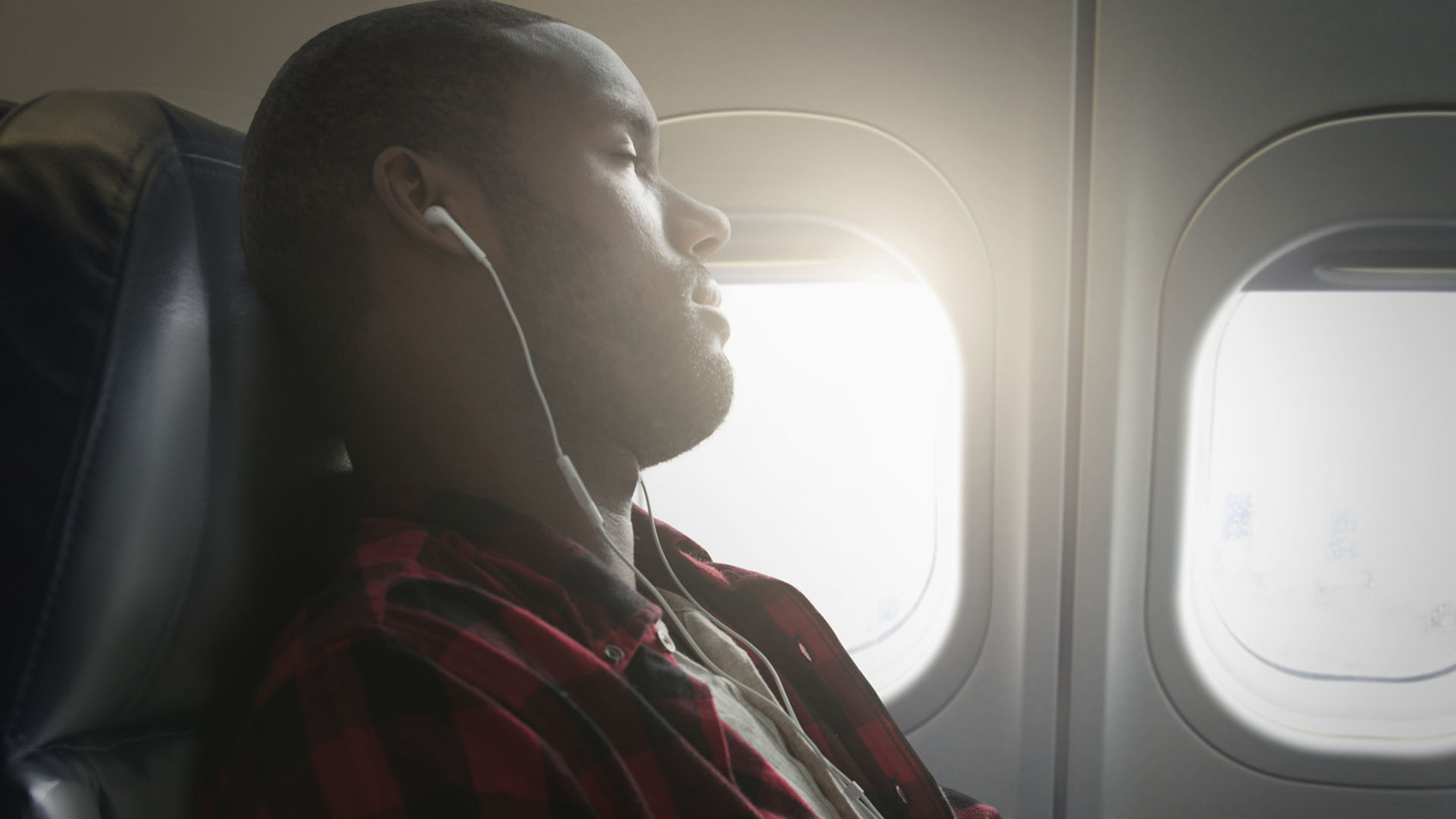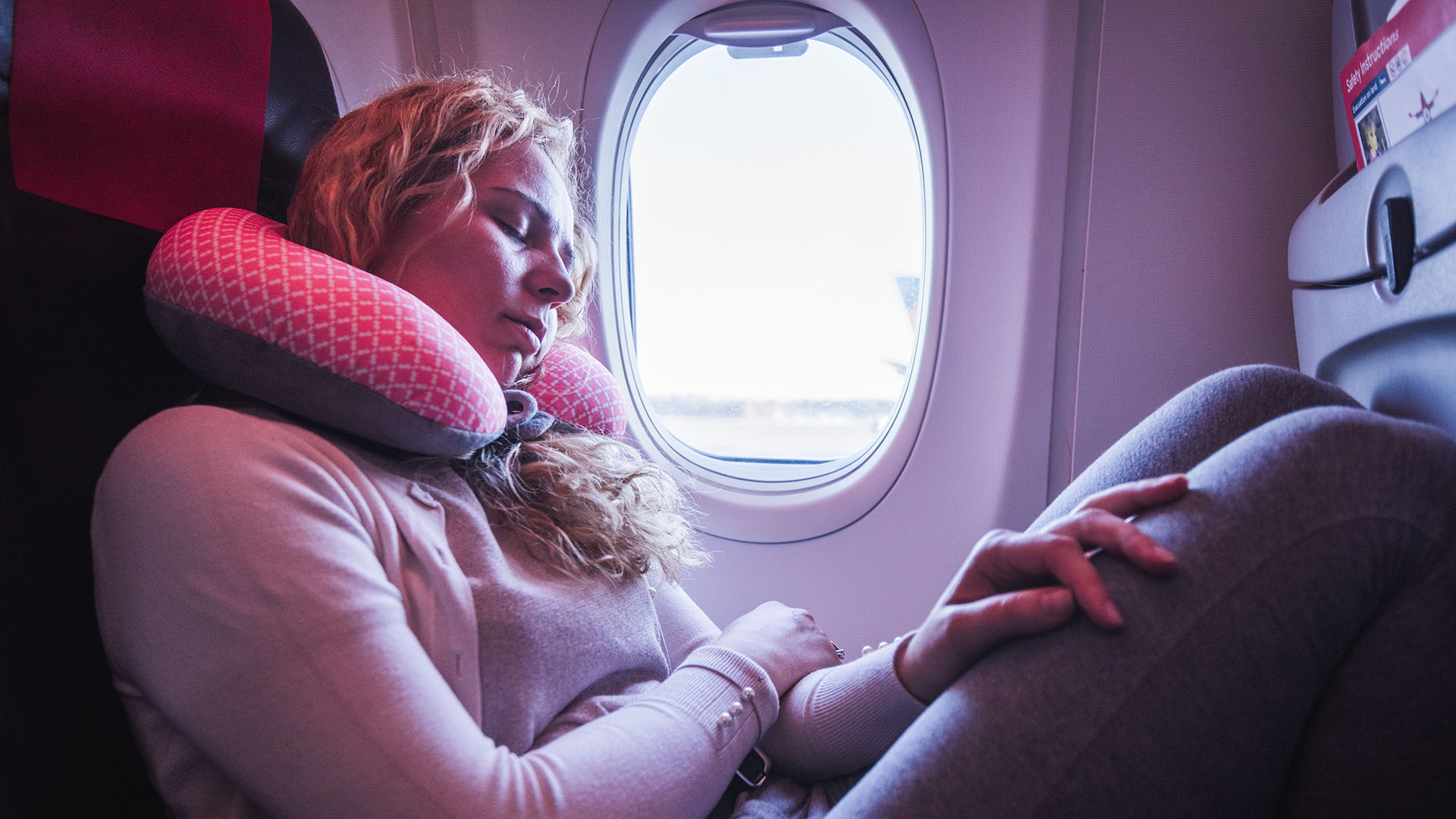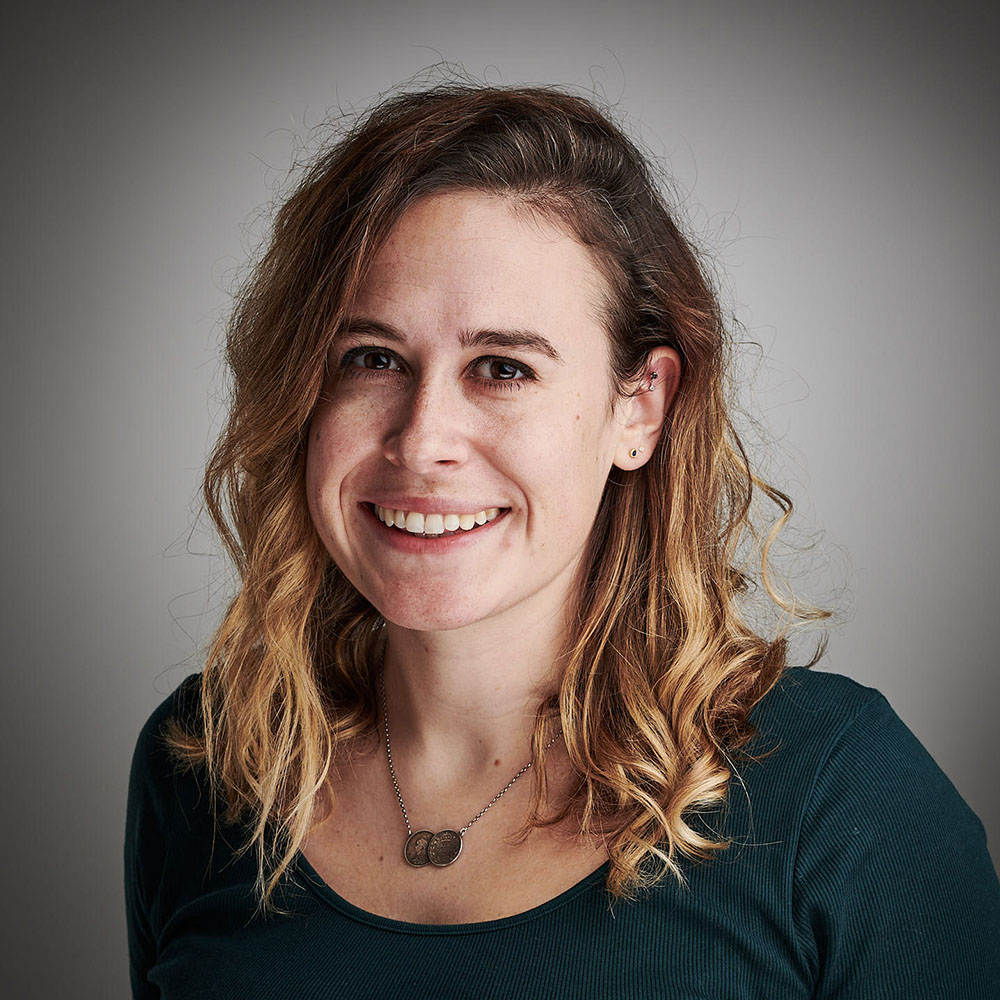This is the best seat to reserve if you want to sleep on a plane
Sleeping on a plane can be a challenge, but this is where to sit to give yourself the best shot

It's summer holiday season. If you're heading away from home on holiday, that means figuring out how to deal with jet lag, as well as navigating the dreaded first night effect. You can go some way to heading off the potential issue by doing some tactical napping on the way to your destination. Sure, the odds are against you when it comes to quality sleep – a cramped plane seat won't provide anything like the comfort of the best mattresses around – but there are plenty of techniques for how to sleep on a plane that are designed to help. And it all starts with picking the right seat.
If you have the opportunity to pick your seat before travel (or even if you don't) there are some golden rules to follow. In short, you want a seat with the most legroom, where you're least likely to be disturbed, to give yourself the best chance of getting some quality shut-eye on your flight. Read on to learn how to find the best airplane seats for sleep, including one handy website that could be a major game-changer.
1. Opt for window rather than aisle
Unless you have a particularly weak bladder, pop yourself in a window seat. You're less likely to be disturbed here, not only by people moving up and down the aisles, but also by your neighbor getting out to use the toilet. If you're in economy, you can also use the side of the plane as a fairly uncomfortable side head rest.
2. Try and snag a spot next to the wing
For a bit of extra space, book a seat on the row where the wing of the plane is. This is where the emergency exits are most likely to be situated, which means you're more likely to snag a spot with more legroom, allowing you to spread out (a bit).
3. Check SeatGuru for insider info
SeatGuru is a service that lets you plug in your flight information and provides you with a map of the plane, with 'good' and 'bad' seats marked up. It'll tell you, for instance, if it's a spot where you won't be able to store items underneath your seat, if your seat is missing a window, or if that part of the plane gets especially cold due to being near an exit.
4. Consider leaving it until the last minute
Do you like to live on the edge? If the best sleep seats have been reserved when you come to book (or if you're on the kind of flight where seat reservations are an optional extra that you don't want to pay for), there is a high-risk strategy you can try. Consider hanging back until everyone else has boarded, and then simply scouting out a location where there are two or three free seats, and claiming that as your spot. Either you'll end up spread out like a queen, or wedged between a screaming baby and a toddler with no appreciation of personal space.

5. Avoid the toilets
The seat near the toilet is a hotspot for disruption. People will stand and queue next to you, and bump your seat as you go past. Avoid if at all possible.
Get instant access to breaking news, the hottest reviews, great deals and helpful tips.
6. Sit yourself near the front of the plane
Those at the front of their section will get their food served and cleared away first, and can get back to the important process of napping. You'll hopefully also be able to disembark first, rather than hanging out on the plane for longer than you need to.
"As a general rule the freshest air enters the cabin at the nose to keep the pilots alert," says Andrew Hayward, former airliner executive and director at Panache Cruises.

Ruth is currently Homes Editor on Tom's Guide's sister site TechRadar, where she reviews and writes about everything from air fryers to vacuum cleaners to coffee machines, as well as the latest smart home gadgets. Prior to making the shift to Homes, Ruth was Tom's Guide's Sleep Editor. A certified Sleep Science Coach, she has tested more mattresses than her small flat can handle and will talk at length about them to anyone who shows even a passing interest.
